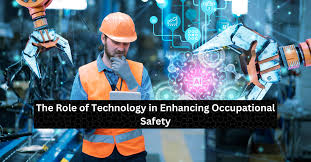The Importance of Industrial Safety: Ensuring a Safe Working Environment
In the fast-paced world of industrial production, ensuring the safety of workers is paramount. Industrial safety is not just a regulatory requirement; it is a critical aspect of operational excellence that protects employees, enhances productivity, and safeguards company assets. This article delves into the importance of industrial safety, highlighting key strategies and best practices for creating and maintaining a safe working environment.

Understanding Industrial Safety
What is Industrial Safety?
Industrial safety encompasses a set of practices, policies, and procedures aimed at protecting workers from hazards associated with industrial processes. These hazards can include mechanical risks, chemical exposures, electrical dangers, and ergonomic issues. Effective safety programs aim to identify, evaluate, and mitigate these risks to prevent accidents and injuries.

Why is Industrial Safety Important?
Employee Protection:
The primary goal of industrial safety is to protect workers from injury and illness. A safe workplace ensures that employees can perform their duties without fear of harm.

Regulatory Compliance:
Adhering to safety regulations and standards is a legal requirement. Non-compliance can result in severe penalties, legal action, and reputational damage.

Productivity and Efficiency:
A safe working environment reduces downtime caused by accidents and injuries. Healthy employees are more productive and engaged.

Cost Savings:
Preventing accidents and injuries reduces costs associated with workers' compensation, medical expenses, and litigation. It also minimizes the financial impact of equipment damage and production delays.

Moral Responsibility:
Ensuring the safety of workers is a fundamental ethical obligation. Employers have a moral duty to provide a safe workplace.

Key Elements of Industrial Safety
Risk Assessment and Hazard Identification
Identifying potential hazards is the first step in creating a safe working environment. This involves conducting thorough risk assessments to pinpoint areas of concern.

Strategies for Effective Risk Assessment:
Regular Inspections:
Conduct routine safety inspections to identify hazards in the workplace.
Employee Involvement:
Encourage workers to report potential risks and participate in safety assessments.
Use of Technology:
Utilize advanced tools and software to monitor and evaluate workplace conditions.

Safety Training and Education
Training employees on safety protocols and best practices is crucial for preventing accidents and injuries.

Training Best Practices:
Comprehensive Onboarding:
Provide new hires with thorough safety training during the onboarding process.
Ongoing Education:
Offer regular refresher courses and training sessions to keep employees updated on safety procedures.
Hands-On Training:
Use practical, hands-on training methods to ensure employees understand how to safely operate equipment and handle hazardous materials.

Personal Protective Equipment (PPE)
Personal Protective Equipment (PPE) is essential for protecting workers from specific hazards.

Effective Use of PPE:
Proper Selection:
Ensure that the PPE provided is appropriate for the hazards present in the workplace.
Training and Fit Testing:
Train employees on the correct use of PPE and conduct fit testing to ensure proper protection.
Maintenance and Replacement:
Regularly inspect and maintain PPE to ensure it remains effective. Replace damaged or worn-out equipment promptly.

Safety Policies and Procedures
Clear, well-documented safety policies and procedures provide a framework for maintaining a safe working environment.

Developing Effective Policies:
Compliance with Regulations:
Ensure that safety policies comply with all relevant laws and industry standards.
Accessibility:
Make safety policies easily accessible to all employees.
Regular Updates:
Review and update safety policies regularly to reflect changes in regulations and workplace conditions.

Emergency Preparedness and Response
Preparedness for emergencies, such as fires, chemical spills, or natural disasters, is critical for minimizing harm.

Key Components of Emergency Preparedness:
Emergency Plans:
Develop and communicate detailed emergency response plans.
Drills and Simulations:
Conduct regular emergency drills to ensure employees know how to respond.
First Aid Training:
Train employees in first aid and CPR to provide immediate assistance in emergencies.

The Role of Technology in Industrial Safety
Advancements in technology have significantly enhanced industrial safety practices.

Technological Innovations:
IoT and Wearable Devices:
Internet of Things (IoT) devices and wearables can monitor environmental conditions and worker health in real-time.
Automation and Robotics:
Automating hazardous tasks reduces the risk of human error and injury.
Predictive Analytics:
Using data analytics to predict potential safety incidents and implement preventive measures.

Conclusion
Industrial safety is a vital aspect of any organization that values its employees, productivity, and reputation. By implementing comprehensive safety programs that include risk assessments, training, PPE, robust policies, emergency preparedness, and fostering a culture of safety, organizations can create a safe working environment. Embracing technological advancements further enhances these efforts, ensuring that industrial workplaces remain secure and efficient.
Investing in industrial safety is not just a regulatory requirement; it is a commitment to the well-being of employees and the sustainable success of the organization. By prioritizing safety, companies can protect their most valuable asset—their workforce—and ensure long-term operational excellence.







.png)






